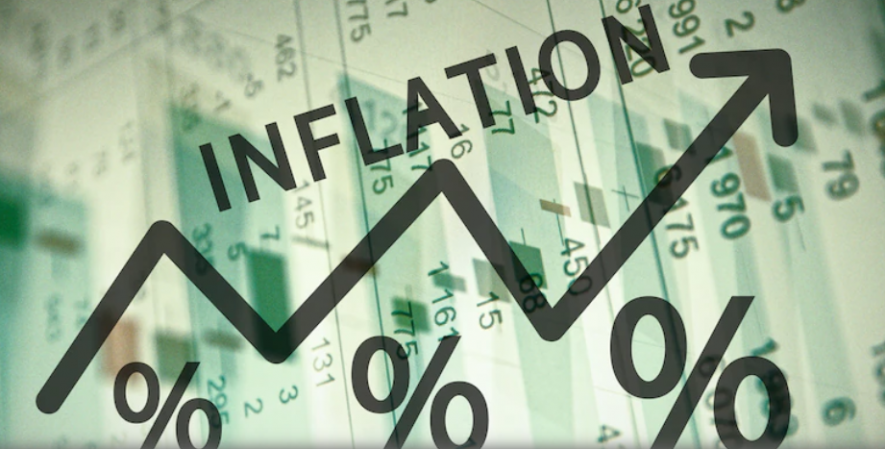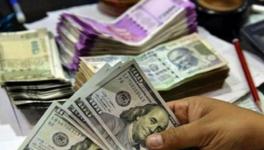Economic Crisis Deepens, Hate And Violence Rises

Image Courtesy: Moneycontrol
If you go by Sarkari views, India's economy is on an upward bounce after the devastation caused by the Covid pandemic. But, in reality, there is ever-widening discontent because of the inability of the government to rein in prices of essential items, its complete neglect of job creation and low incomes that are unable to recover to pre-pandemic levels. This discontent has been visible in not just recent elections – where both price rise and joblessness were prominent concerns of voters – but also in inevitable protests that are gathering pace. The year-long farmers' struggle ended last November after a scared government withdrew the three infamous agri-laws. But protests against other government policies have continued. The most recent – and one of the biggest – was the two-day general strike on March 28-29 called by a joint platform of trade unions, supported by the farmers’ organisations and a phalanx of peoples’ organisations. An estimated 25 crore persons participated in the protest actions over the two days.
Not surprisingly, very shortly afterwards, a spate of orchestrated incidents of communal violence erupted spread across nine states. Three religious occasions – the Hindu new year (nav samvatsar) on 2 April, Ramnavmi on 10 April, and Hanuman Jayanti on 16 April – were used to take out provocative processions and clash with minority community members. In some cases, mosques were entered and attempt to hoist saffron flags took place. In many cases, the BJP state administration (or municipal body, in Delhi) followed up by demolishing houses in the area where clashes took place, mostly belonging to the minority community, through some innocent majority community members' houses or shops were also torn down. It is natural that such a flagrant provocation and the insidious propaganda unleashed in accompaniment should fan the flames of hatred and vitiate the otherwise harmonious relations between religious communities.
It also served the purpose of diverting the attention from the mounting pressure on the Modi government to change its policies that are leading to widespread economic distress and immiseration of people. The poor, who are the most affected by sky-high inflation and joblessness, are also the ones who are forced to save their lives and meagre possessions in communal violence or subsequent administrative coercion.
Meanwhile, the poor and deprived of the country, numbering in crores, continue to face the onslaught of an economic offensive, the likes of which have not been seen in recent memory.
BACK BREAKING PRICES
The relentless rise in prices of essential items of use – from food to fuels – over the past year has severely dented family budgets and led to cutbacks in consumption. Retail inflation, that is, the rise in prices of what common people pay for various commodities or services, was recorded at 6.95% in March, according to a government release. Prices of food items rose at an even higher rate, at 7.68% in March compared to 5.85% in February. This hike in food prices is driven by an unbearable rise of 18.79% in the prices of cooking oils and fats and an 11.64% jump in the prices of vegetables. Meat and fish prices increased by 9.63%, and spices have increased by 8.5%. Even cereals and products increased by nearly 5%, as did milk and its products. Food items form the major chunk of family spending for most Indians, and the continuing rise in these prices is destroying living standards across the board. Apart from food items, prices of fuel and lighting-related commodities increased by 7.5%, while clothing and footwear rose by 9.4%.
But the bad news on prices doesn’t end here. Data on wholesale prices released by the government, too, showed shocking increases. Wholesale prices increased by a whopping 14.5% in March. This is the second-highest increase in the past ten years, with the highest reported just a few months back in November 2021. In fact, 2021-22 has become the year with the highest average yearly wholesale price increase in the past decade at 13%. The second highest was 2012-13, which recorded an annual increase of 6.9%. Much of this increase is driven by fuel prices, which accounted for 25% of the jump in wholesale prices. Petrol and diesel prices have been kept artificially high by the Modi government through the onerous imposition of excise duties.
An increase in wholesale prices gets transferred to the common consumers after a time lag. This means that in the coming months, these high wholesale prices will be offloaded onto the common people, and already high consumer prices are likely to increase further.
Where are the promised jobs?
Rising prices always hurt in India because the large bulk of the population earns so less. Any price rise directly damages the already low living standards. But, at present, backbreaking prices are being borne by people who are already crushed by a lack of jobs and low incomes. This is not only because of the pandemic, although the ill-conceived responses of the Modi government did inflict enormous damage to families' earnings in the past two years. The economic downturn actually started earlier, and unemployment rates have been hovering in the 7-8% range since the latter half of 2018, according to CMIE survey data.
The true measure of the jobs crisis is not had from just unemployment rates. To understand the scale and severity of this crisis, look at this: the total number of employed persons in India has shrunk in the past five years, from 40.1 crore in January 2017 to 39.6 crore although India's population has increased in the same period from 130.5 crore to 137.4 crore.
Another measure is the demand for work in the rural job guarantee scheme. Data on the official portal of the scheme shows that in 2018-19, about 7.77 crore persons worked in the scheme, which rose to 7.88 crore in 2019-20, but then it shot up in 2020-21 due to the lockdowns, and in 2021-22 it remained high at 10.62 crore. This shows the severity of the jobs crisis, which is forcing people to go back to already over-saturated agriculture or seek paltry work in the job guarantee scheme. Remember that the average number of days of work provided in the scheme is just around 50, and the average wage was just Rs.209 per day in 2021-22. The kind of meagre survival income that this provides points to the distress that is forcing people to take up this work, and the wage rates show what kind of succour they get from such work.
DISMAL REAL WAGES
According to a study done by the Economic Times on rural consumption levels, real agricultural wages have increased by a mere 0.3% in 2020-21 and by 1% in 2021-22 fiscal years. In the same years, non-agricultural wages in rural areas increased by 1% in 2020-21 and declined by 0.2% in 2021-22.
These abysmal changes in inflation-adjusted wages in rural areas, where the bulk of India's population lives and works, shows the economic distress and pauperisation of people sweeping the country like a pandemic of its own.
RELIGIOUS VIOLENCE DISARMS PEOPLES’ STRUGGLES
It is instructive to note that the country's top leadership, those in the government, either maintained silence over the violence or got involved in marshalling police forces to supposedly quell it. Perhaps, the BJP leadership was heaving a sigh of relief that the pressure to ease economic distress had receded, even if temporarily. Perhaps, these recurring events that target the minority community and include such issues as hijab-wearing, love jihad, Uniform Civil Code, etc., are also being seen by the RSS and its representatives in the government as steps towards the building of Hindu Rashtra. Either way, they serve to disarm the unity of the people and thus ensure the perpetuation of the BJP's toxic rule.
Get the latest reports & analysis with people's perspective on Protests, movements & deep analytical videos, discussions of the current affairs in your Telegram app. Subscribe to NewsClick's Telegram channel & get Real-Time updates on stories, as they get published on our website.
























